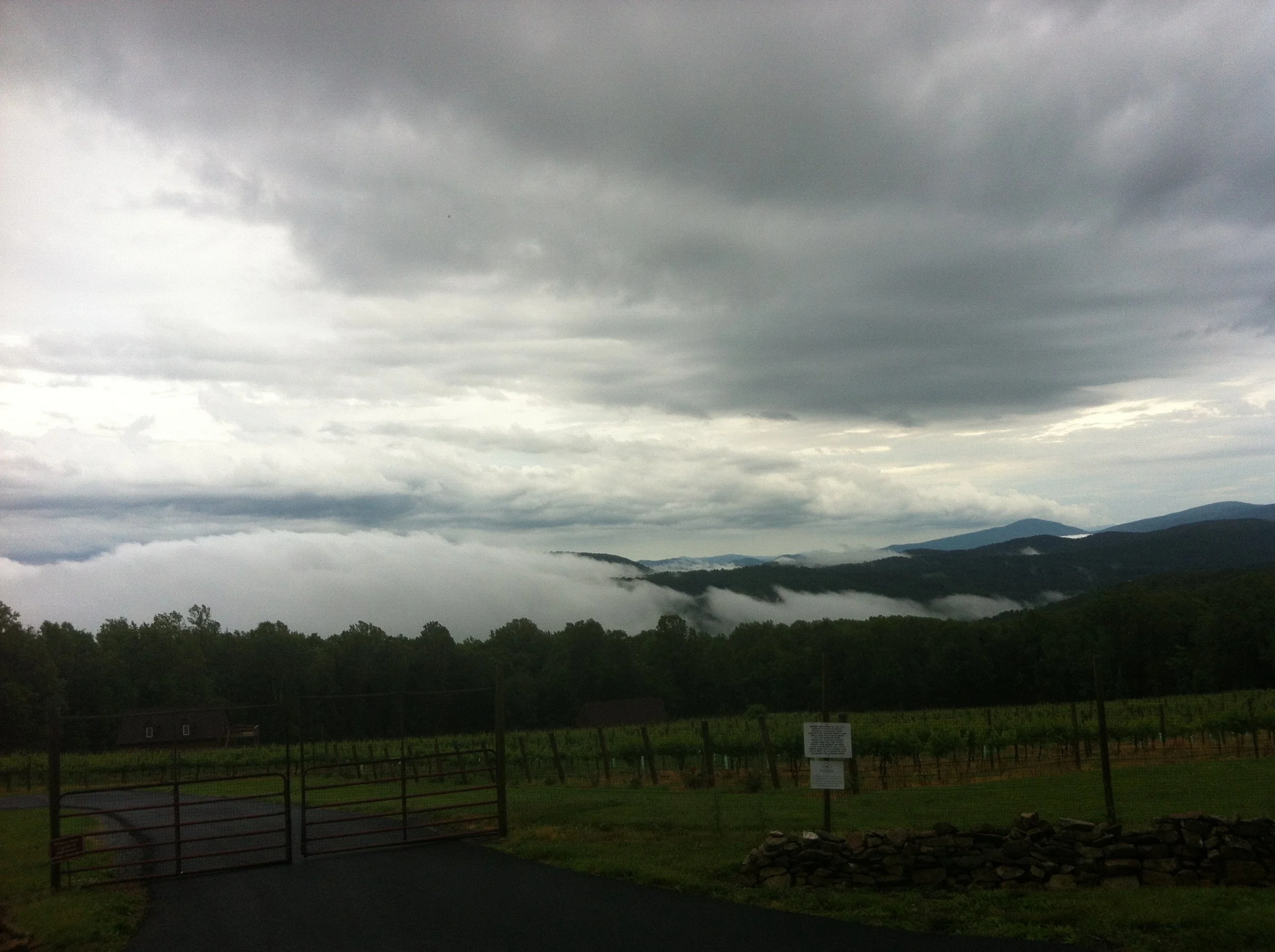Rain
It’s raining again today. Our student crews are home in bed taking a long over due break. Dayle, our filed crops manager, is wondering around the office in his socked feet with a smile from ear to ear. All his crops are in and gentle rains continue to fall. He was able to get hay in this week before the current drenching and it was three times expected because of the past drenchings. George now informs me in the last 30 hours we have gained over 2 ½ inches. June of ’12 deposited a ¼ of an inch of rain over the entire month. It’s shaping up to be quite a different summer.
In the gardens the tomatoes are growing so fast we can’t keep up with the pruning. The apples flushed out so strong the thinning will take us another two weeks. Peaches are sitting ready, turning this rain into sweet flesh. The crops in the CSA baskets this week will double in variety. Our small farm stand is doing twice the sales then last June greatly due to the fact that we just have more to offer, all this because of the rain.
With that, my thoughts went to the rain and quickly to Longfellow’s popular quote, “The best thing one can do when it’s raining is to let it rain.” Which we are…gladly we are. However, nothing is as simple as it may seem. Many of us are familiar of Longfellow’s portraits cloaked in his white flowing beard. These portraits were created in the elder years of his life as his fame blossomed. In these years he met with heads of states, queens and the prominent worldwide, all because of his writing. All because of his writing in the years - before his beard. Before age 54 all his portraits show him clean-shaven and after 54 all are bearded. I personally wouldn’t recognize him without that significant beard.
However, life wasn’t all easy for Longfellow. At 28 he lost his wife due to a complicated miscarriage while on travel in Europe. He remarried at 36. In Mid July 1861 Longfellow’s second wife (Fanny Appleton, mother of his children) in the process of melting some sealing wax on a letter, accidently set fire to her own clothing. The fire engulfed her rapidly and she died the next day. Longfellow in a frantic reaction to save her from the ensuing flames severely burnt his own hands and face. Left with more then the emotional scars of the loss of another wife he grew his beard to cover his face. He was 54. They had been married for 18 years. His letters to her sister a month later show him saying, “How I am alive after what my eyes have seen, I know not.” I suspect these blows formed his views on rain.
With a long white beard in 1863 he published Tales of a Wayside Inn. In this volume you find The Poet’s Tale; The Birds of Killingworth where we mark our quote about the rain. No surprise he isn’t talking about literal rain all-be-it spoken from a needy farmer. The rain is good for us at the farm this month. But that’s not always the case. Whether actual rain or metaphorical rain it’s often tough to know what to do when it isn’t good. But, I suspect Longfellow’s advice would be the same, “let it rain”. The Birds of Killingworth is a great read. Worth the 15 minutes as it tells a fantastic tale of life, lessons and farming. If you have the time you can find it attached. -Garth


